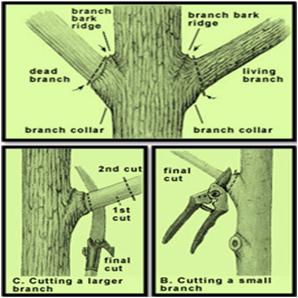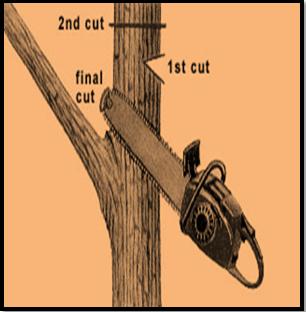How to Prune Trees and Shrubs

Pruning is a useful activity to maintain the proper desirable shape of the trees and shrubs. It is good for the overall health of the plants as the extra branches are removed the remaining ones get proper amount of food. Moreover, pruning helps in stimulating fruit production and increasing the value of timber.
There are three main types of pruning i.e. Pruning for safety (removing branches that could fall and cause injury or property damage), Pruning for health (removing diseased or insect-infested branches), and Pruning for aesthetics (enhancing the natural form and character of trees and shrubs). Anyhow, it is really important to prune only when required.
Things required:
– Thick gloves
– Pruning saw
– Sharp pruner
– Lopper
Instructions
-
1
Identify the branches
Identify the branches of trees or shrubs that are diseased, woody, dead or growing the wrong way. Now mark them so that you can carry out the pruning process smoothly. -
2
Pruning living branches
Cut 1: Use a small pruning saw to make small wedge shaped cuts on the underside of the selected branch - right on the side of the stem collar. It helps in breaking the bark at the selected point, averting a slash from running along the main branch and stem tissue.
Cut 2: Start at the top of the branch and use a sharp pruner to cut till the base of branch, leaving a stub end.
Cut 3: Finally, use a lopper to make a third cut, parallel to and just on the branch side of the stem collar to decrease the overall length of the tree or shrub stub as much as possible.
-
3
Pruning dead branches
Cut 1: Use a pruning saw to make a medium cut just above the branch bark ridge and gently lengthen it through the stem, alongside to the branch bark ridge.
Cut 2: Now make a nick on the side of the stem and away from the healthy branch to be kept – right on top of the branch crotch.
Cut 3: Use a sharp lopper to slash the left behind dead stub just within the branch bark ridge through the stem parallel to the branch bark edge.







